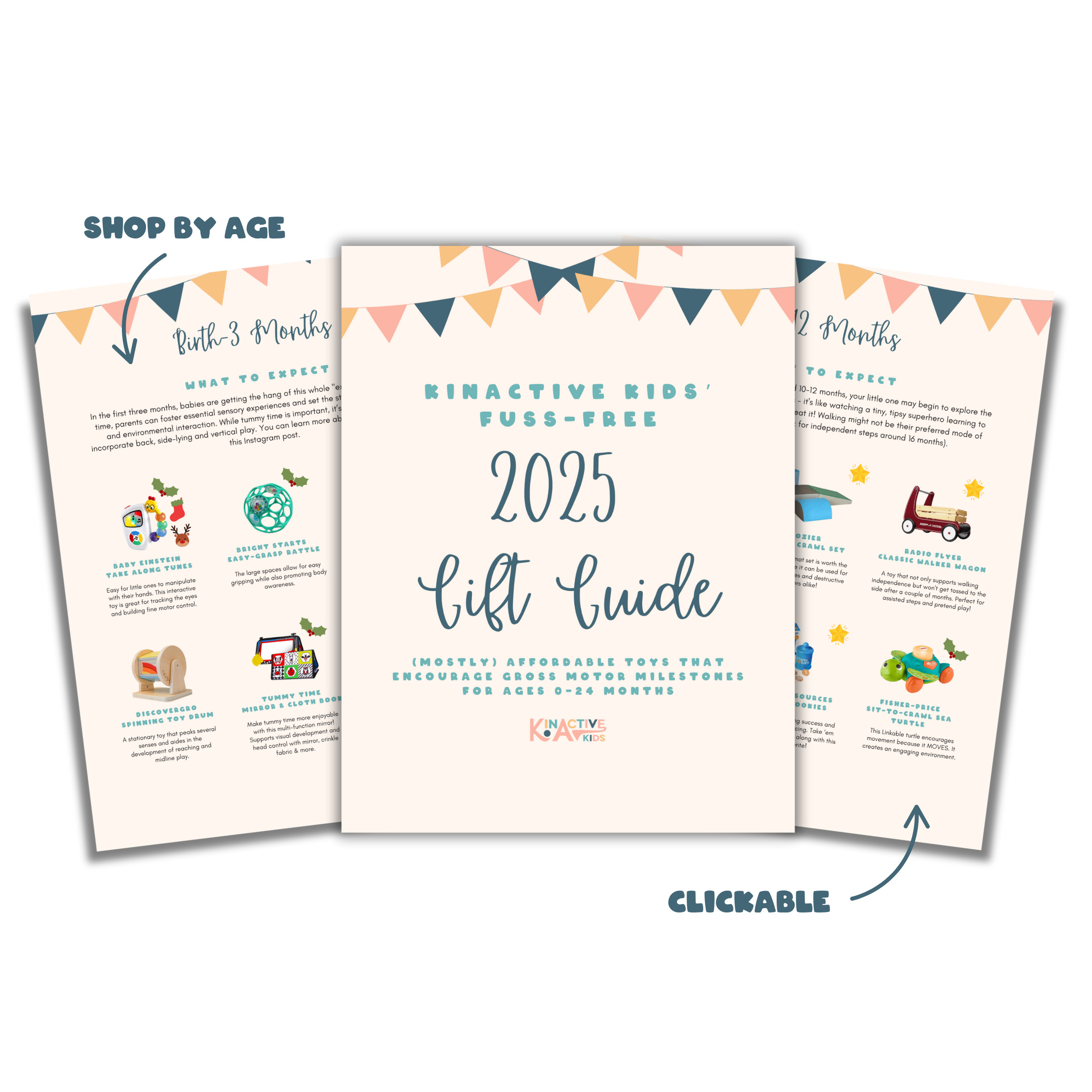Comparing The KinActive Method and DMI Therapy


What is DMI Therapy?
Dynamic Movement Intervention (DMI) is a structured therapy approach designed to activate specific motor patterns through repetitive exercises. Its goal is to strengthen motor pathways and improve coordination, targeting gross motor skills such as rolling, crawling, and walking.
Key Features of DMI Therapy:
- Structured Protocols: Exercises are predefined and focus on activating specific movement patterns.
- Repetitive Practice: Therapy relies on intensive repetition to build neural pathways for motor skills.
- Goal-Specific Focus: Targets specific milestones rather than addressing underlying impairments or overall development.
While DMI has been effective for many children, its highly structured nature can sometimes limit its ability to adapt to a child’s changing needs or challenges. Research on motor learning suggests that repetitive exercises without variability may improve performance in therapy but don’t always generalize to functional, everyday skills.
What is The KinActive Method?
The KinActive Method offers a dynamic, individualized approach to gross motor development, addressing not just motor milestones but also the underlying causes of delays, such as compensatory patterns or sensory processing challenges. This method integrates techniques from Pediatric Physical Therapy, Chiropractic Care, Sensory-Motor Integration, and play-based learning to promote long-term, functional independence.
Key Features of The KinActive Method:
- Individualized Plans:
- Therapy begins with a comprehensive assessment of your child’s strengths, challenges, and goals.
- Plans evolve as your child progresses, ensuring therapy always aligns with their unique needs.
- Holistic Approach:
- Focuses on the whole child, addressing structural alignment, sensory processing, and neurological function alongside motor skills.
- Encourages skills that translate into real-world settings, such as navigating the playground or engaging in everyday activities.
- Family-Centered Care:
- Parents are active participants in therapy, learning strategies to continue their child’s development at home.
- This collaboration extends therapy benefits beyond the clinic, empowering families with tools and knowledge.
- Play-Based Therapy:
- Sessions are engaging and fun, promoting learning through exploration and fostering problem-solving and adaptability.

Key Differences Between DMI Therapy and the KinActive Method
| Aspect | DMI Therapy | The KinActive Method |
| Structure | Relies on fixed, structured protocols. | Offers flexible plans that evolve with your child’s progress. |
| Focus | Targets specific milestones like rolling or crawling. | Addresses the root causes of delays while promoting overall development. |
| Parent Involvement | Primarily therapist-led with limited parent education. | Actively involves parents, empowering them to support therapy at home. |
| Generalization | Gains are often specific to DMI exercises. | Focuses on practicing skills in real-world contexts to ensure functional independence. |
| Engagement | Can feel repetitive or clinical. | Integrates play and exploration, making therapy enjoyable and effective. |
Why Does Adaptability Matter?
Research emphasizes the importance of variability and task-specific practice for motor learning and skill generalization. Schmidt and Lee’s Schema Theory highlights that exposure to a range of movement patterns and contexts allows the nervous system to form adaptable motor plans. Gentile’s Two-Stage Model also underscores the importance of functional, context-based learning in acquiring and refining motor skills.
In contrast, DMI Therapy’s repetitive, protocol-driven nature may limit adaptability by focusing on predefined exercises that don’t always translate to real-world skills. Studies in Developmental Medicine & Child Neurology (2020) support the need for interventions that consider the child’s environment, preferences, and overall participation in daily activities—principles central to The KinActive Method.
Which Approach is Right for Your Child?
Choosing the right therapy depends on your child’s unique needs and your family’s goals. DMI Therapy can be beneficial for children who thrive in structured settings and need targeted motor pattern activation. However, for families seeking a more comprehensive, flexible, and engaging approach, The KinActive Method offers a solution that evolves with your child and focuses on real-world functional outcomes.
Next Steps
If you’re curious about how The KinActive Method can help your child, we’d love to connect with you. During a consultation, we’ll assess your child’s needs, answer your questions, and develop a personalized plan to help them thrive. Schedule your consultation today—let’s work together to support your child’s journey toward independence and confidence.
Sources Cited:
- Schmidt, R. A., & Lee, T. D. (2011). Motor Learning and Performance: From Principles to Application. Champaign, IL: Human Kinetics.
- Gentile, A. M. (1972). A working model of skill acquisition with application to teaching. Quest, 17(1), 3-23.
- Developmental Medicine & Child Neurology. (2020). Reviews on context-specific and task-oriented interventions in pediatric rehabilitation.



